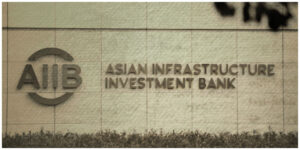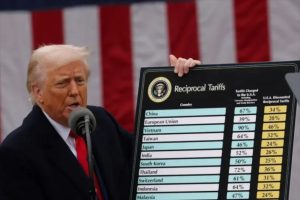Petroyuan has become the new scent of global power.
“A barrel of oil now smells not of dollars, but of yuan.” The metaphor sounds like a verdict for an era when the green paper was considered the scent of global power. The symbol has shifted: where the dollar fetish ruled for decades, an Eastern sign emerges, reminding us that monopolies are doomed to decay.
Numbers speak more directly than any rhetoric. More than 30% of payments for Russian oil are now settled in yuan, while ten years ago their share was closer to a mirage than reality. The speed of this shift shows that settlements in national currencies are no longer a matter of discussion in boardrooms. It is now a movement that has slipped out of the hands of Western regulators and acquired its own rhythm.
The essence of the process is transparent: the energy market is breaking free from the dictates of a single currency. The logic of the global economy drives it toward stability, where the right to settle does not require the blessing of the Federal Reserve System.
Saudi Arabia, Iran, and Russia — The Core of the Energy Rift
Saudi Arabia is cautious, yet its steps toward the yuan are not limited to declarations. Even a half-measure by the oil kingdom reveals a simple fact: the dollar has ceased to be a totem of inevitability. Each such gesture, like a crack in the facade, shows that the old architecture is losing its foundation. Concrete deals with Chinese partners — joint ventures, petrochemical expansions, and new investment frameworks — demonstrate that this shift is anchored in contracts, not just in speeches.
Russia and Iran have long since learned to live in a space where settlements are defined by national will rather than American sanction scribes. Pressure only accelerated their steps, turning threats into incentives. Where Washington sought to slow things down, an accelerator appeared, transforming isolation into a new channel for institutional solutions. The same centrifugal force now reshapes Asia, where security alliances evolve into economic shields against imperial rivalry. And in the middle of this process, petroyuan transactions anchor a new habit of trade, proving that the shift is structural, not episodic.
Every agreement in yuan, dirhams, or rupees adds to the foundation of a structure that pushes the dollar out of the energy center. The more of these bricks are laid, the clearer it becomes: the old monopoly has ceased to exist even as an idea.
BRICS+ Petroyuan Exchanges — New Gateways of the Global Economy
The gateways of the global economy are no longer guarded by Anglo-American gatekeepers. New exits are emerging beyond London and New York, and those who seek access to the resources of the 21st century now enter through new doors where settlements are made in the currencies of states, not in dollars draped in the flag of empire. This is no longer a matter of isolated experiments: the BRICS Leaders Declaration in Rio publicly codified the political will to institutionalize alternative platforms and financial arteries across the Global South.
China and its partners are building the architecture of the future: exchanges, clearing systems, digital platforms. New, reliable tools for dismantling the old order. Once the infrastructure becomes a dense network, the alternative model ceases to be an exception and turns into the norm. This infrastructure thickens into the arteries of a new geopolitical organism, where energy corridors no longer radiate from Wall Street but from BRICS hubs across Eurasia.
The rules of the game have already been written, and the authorship does not belong to Wall Street. Once they operate at full capacity, the road back will cease to exist. The old order will survive only in the museums of economic memory — alongside artifacts of the colonial era, presented to impressionable visitors with a dose of ironic smiles.
The Western Response and the Limits of Dollar Power
With obsessive persistence, Washington tries to use sanctions as a talisman. And time after time, these attempts turn into curses for Washington itself. Each new round of restrictions pushes the world toward an accelerated escape from the dollar. The United States has become the accelerator of the very processes it wished to freeze. Where a trap was planned, a corridor emerged for the exit into national currencies.
Harsh control breeds the opposite effect: the more Washington presses, the faster currency pluralism takes shape. This process is no longer governed by the designs of individual countries — it is driven by the global logic of survival. The market instinctively seeks stability and finds it in diversification. The yuan moves forward as a key instrument, while the rupee, dirham, and ruble gain strength alongside it.
The dollar still holds the title of global currency, but in energy it long ago lost its aura of trust. From a symbol of strength, it has turned into a toxic asset, evoking political threats more than financial reliability. Its decline only cements the prospect of a new system, where settlements in national currencies are no longer a challenge. They are becoming the norm.
A New Map of the World
Energy is slipping from the dollar’s grasp and ceasing to serve as its weapon. In its place emerges the foundation of a multipolar architecture, growing with no reverse path. Every contract in yuan, rupees, or rubles is an investment in a new standard.
The question is no longer whether the transition will take place, but at what scale and at what speed it will be consolidated. Every oil and gas deal becomes part of a process in which the habit of the dollar dissolves, just as British pounds once dissolved in colonial ports.





